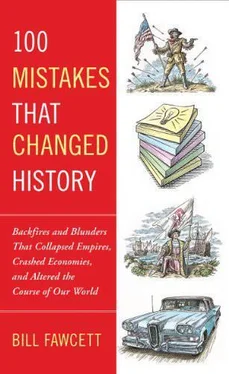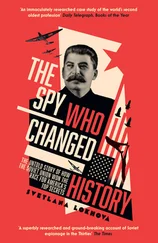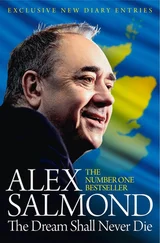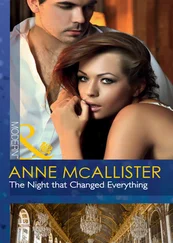The real difference between the ships of Spain and England was the type of cannon they carried and the way the ships were constructed. The limiting factor in cannon size was weight. The bigger the cannon, the greater the weight, which increased much more than the caliber, and there was only so much weight a wooden ship could handle. Each of the opponents approached this limit in a different way. The large Spanish warships, and they had about forty of them, were slow, massive, and made of very thick wood. The cannons on all of the Spanish warships had a very large bore and were short in both length and range. In contrast, the English ships were much more lightly built and much more maneuverable. The cost of this was that they were made of thinner wood and could not carry as much “weight of metal” as the Spanish ships. The English vessels carried cannons that were smaller and much longer than those of the Spanish. This meant they could throw a small cannonball very far and accurately. The problem was that those cannonballs were relatively small and far too often they bounced off the thick sides of the armada’s warships. In addition, size mattered, since the English crews were much smaller, and their ships carried no extra soldiers: This meant that there was no way for them to board and capture the much larger Spanish warships.
So the two battling fleets fought their way up the Channel. The dense mass of the armada made it suicidal for the English sea dogs to approach close enough that their smaller guns would have any effect on the thickly hulled armada. Only by staying at long range did they avoid any damage to themselves. Keeping a disciplined and tight formation, the Spanish Armada was able to sail up the Channel under constant, but ineffective, fire by the English. The armada’s guns fired back as well, but they were unable to hurt the English ships as most of their shots fell short or were off target. This was a victory for the Spanish as their goal was not destruction of the English ships, but rather to transport an army across the Channel. Since the British were unable to stop the armada from sailing up the Channel, it appeared they would be equally unable to stop the same ships from crossing over with the duke of Parma’s army on board. England seemed to be doomed, and Spanish morale soared.
The long fight had used up much of both the Spanish and the English powder and shot. But neither side knew just how low the enemy’s supplies were. Then the weather turned rough. To the Spanish captains, more used to sailing in the relatively placid Mediterranean, a Channel storm, with the rocky French coast nearby, was a frightening threat. Even the English pulled back to give themselves more sea room. The armada anchored along a sheltered part of the French coast near Calais. They kept their tight formation and anchored close to each other for mutual protection. There was only a few hundred feet at most between ships when the first English fire ships appeared. Fire was one of the great dreads of any sailor in the age of wooden hulls and canvas sails. Just about every element of a sailing ship was flammable. One spark could doom a ship in minutes. Cutting their anchor cables, the ships of the armada rushed away from the tar-coated, burning, and possibly gun powder-filled vessels coming at them.
Their rapid rush out of the anchorage meant that the Spanish warships were no longer mutually supportive and in close formation. They found themselves spread out in rough weather, with some ships too far away to be assisted by the others. English sea dogs, such as Francis Drake, gathered in groups of three to as many as ten, and they swarmed the isolated Spanish warships. More than a dozen of the big Spanish galleys were lost and most of the remaining ones were captured, before the armada was able to regroup into an effective defensive formation. Spanish morale was no longer soaring. A decision had to be made on what to do next.
The remaining thirty of the larger ships would likely have been able to escort Parma’s army across the Channel. The ships captured by the English were not going to be ready to fight against their former owners for some time. England could still be conquered. Even if they had to wait a few weeks more than planned for Parma, the plan could still work. But Medina Sidonia made a different choice. He saw that their shot and powder were low and that the armada had nowhere to replenish. He had to suspect the English supply was also low—it was, actually, even worse than that. The English had effectively used the last of their shot and cannonballs attacking the stragglers. But Medina Sidonia did not take the chance that this was the case. The idea of another anchorage with the sea dogs hovering just out of reach likely did not appeal to him.
The commander of the armada decided to abandon the invasion and just get his ships back to Spain. There was always next year. At this point no mistake had been made. The strategy would work, and there was no way for the commander of the armada to know the deplorable status of his opponent’s lockers.
Then Medina Sidonia made a mistake that cost Spain her armada.

The bulk of the armada was sitting low on ammunition, having already lost many of their warships at the top of the English Channel. Below them and between them and Spain was a virtually undamaged mass of English ships whose own ammunition status was unknown. If they were as low on powder and shot as his ships were, the armada could wave as they passed by and reach Spain untouched. If the English had been able to get into their nearby ports and restock, then sailing toward those ships guaranteed the loss of the armada. So instead, Medina Sidonia chose to go the other way. He ordered sailors, experienced only at sailing in the calm and warm Mediterranean and South Atlantic waters, to sail north and return to Spain by sailing around Scotland and Ireland. If the armada had been a marching army, and they had a chance to walk back unopposed, this would have made sense. Being a land commander and looking at the maps, this decision must have seemed like an excellent choice to Medina Sidonia. But the armada was not an army just taking a different route to march back to friendly territory. It was a fleet sailing into unknown and unfamiliar waters. Waters where weather was a factor, and the weather in those North Sea waters was always fierce. A seemingly safe route that would have served an army well on land was a disaster for the armada.
Between the cold northern water and almost two weeks of storms, less than half of the remaining ships in Medina Sidonia’s armada lived to see Spain again. His decision to avoid the sea dogs and go “safely” north changed history. It began the age of English dominance of the seas, and it marked the beginning of the collapse of the Spanish empire. Too much of Spain’s wealth had been spent on the armada, and with the effective loss of control of the seas, the wealth that flowed in from the Indies began to dry up. This was not the only cause for Spain’s economic collapse, but within a few decades after the armada turned north, Spain had been relegated from the leading power of Europe to an incidental player.
Phlogiston
1694
Eminent scientists from the seventeenth and eighteenth centuries defended the phlogiston explanation of heat and chemical change. One of the best thinkers of his time, George Ernest Stahl, popularized the idea while a professor at the University of Halle from 1694 to 1716. Phlogiston was an “element” said to be contained in all substances that could be burned. It was often described as “inflammable earth.” Phlogiston was used to explain and predict all things relating to heat and fire. Indeed, Joseph Priestley, considered the father of modern chemistry, went to his grave defending the phlogiston theory. It was thought to be a material that did not just contain heat but was itself the heat. Phlogiston was without color, smell, weight, or taste. When you burned something, you were dephlogisticating it—that is, driving all of the phlogiston out of the material. Often this left behind only ash.
Читать дальше













